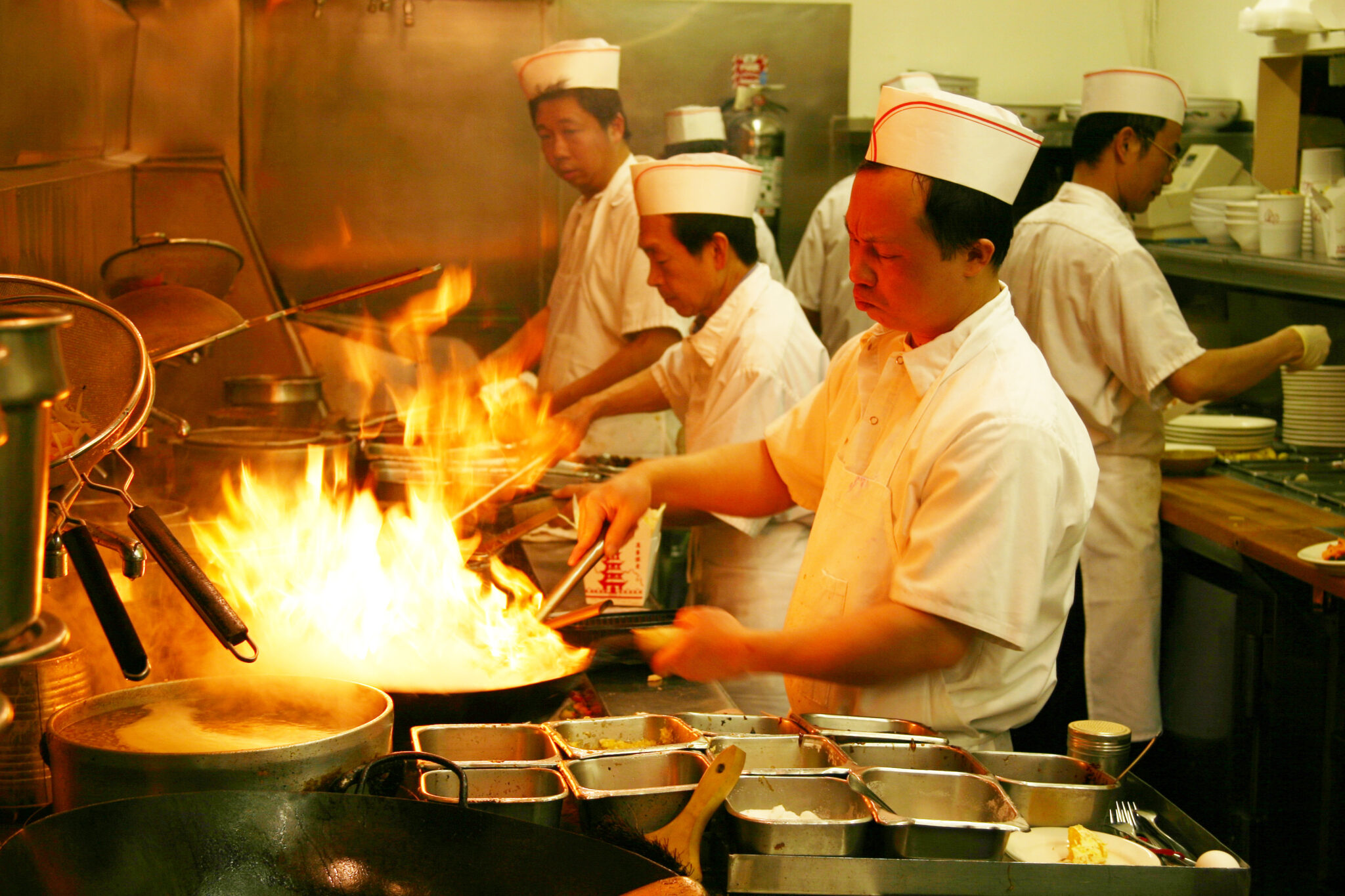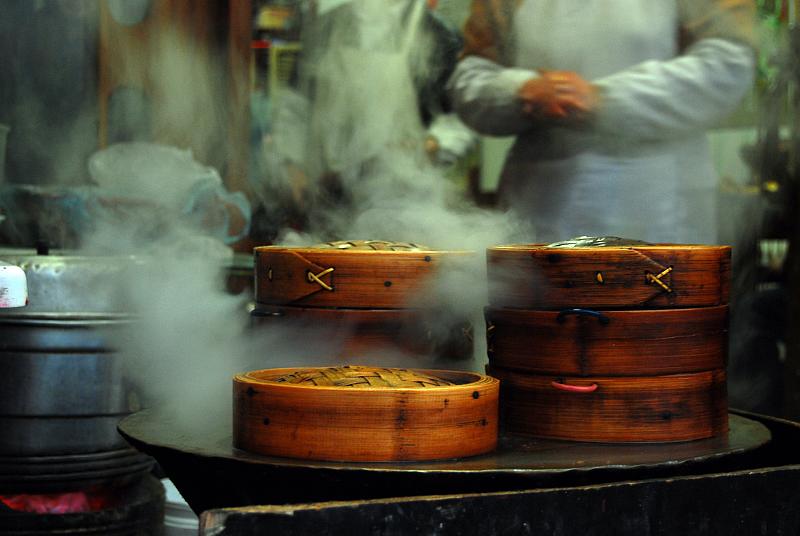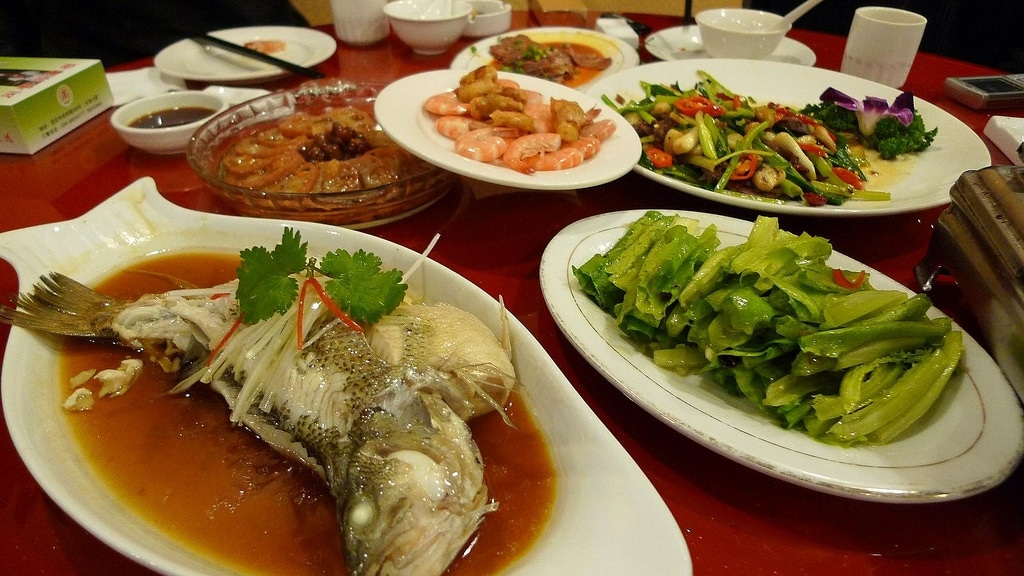This post is part of a series exploring Chinese culture. See the links at the bottom of this page for more.
Much of Chinese culture revolves around dining and culinary experiences where both business and pleasure are combined with an astonishingly wide array of tastes and smells. Being such a large and ethnically diverse country with different climates and natural resources each region has its own local specialities which the Chinese are often keen to try and introduce to others. Generally, you will find hot and spicy food in the north with mild and cooler food in the south (more about regional cuisines here).

A Chinese dining table is usually round allowing everyone to engage equally in conversation and will be set with two bowls (for rice and soup), a plate (for meat and vegetables), a cup for tea, and a pair of chopsticks for each person. Food dishes are placed into the centre of the table to be shared with everyone. Don’t be put off if you see people spitting bones/seeds onto the plate as this is perfectly normal when eating Chinese food.

Contrary to what you might find in your local China Town, Chinese food is generally healthy and often beautifully presented. Texture, flavour, colour, and aroma are key considerations for all Chinese cooks (above nutritional content). In addition, specific foods have different meanings and must be eaten on various occasions such as festivals, weddings, or to welcome an honoured guest.

Heavy drinking is often a part of doing business and it is expected that you’ll keep up with others. If you do not want to drink alcohol make it clear before you start. Be warned that Chinese spirits are particularly potent!
Next time we look at the core concepts which influence Chinese thinking and how this affects personal and professional relationships.
If you have any experiences you’d like to share or think I’ve got something wrong please feel free to leave a comment below.
Other posts in this series:
- History
- Language
- Society
- Education
- Food / Dining (this post)
- Core Concepts
- Key Differences
- 10 Practical Tips

Reply